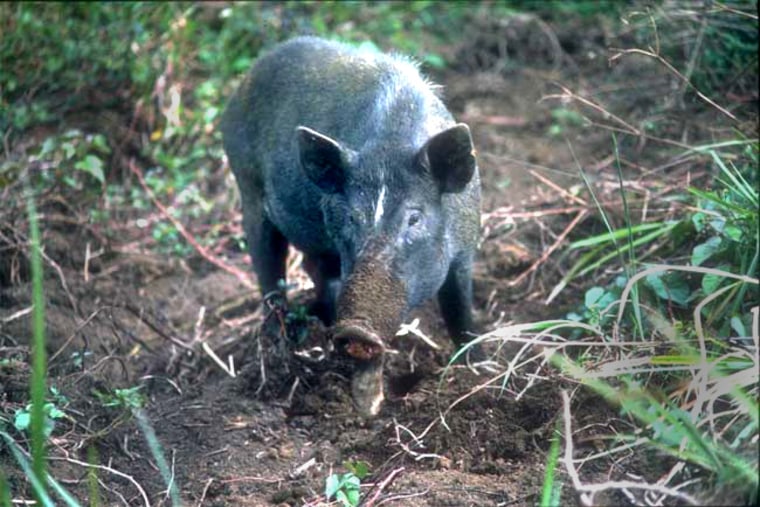Pigs made a harrowing journey about 3,500 years ago to the most remote islands of the Pacific alongside their ancient human owners, and that partnership is revealing how the region was colonized.
The popular historical thinking has been that the entire pioneering group — humans, pigs and all of their additional living and cultural accoutrements — embarked from Taiwan as a single unit. A new DNA study of ancient and modern pigs suggests the geography is not so simple.
"The traditional thought is that people left Taiwan, went to the Philippines, then [dispersed] from there," said Greger Larson, a geneticist who led the study while at the University of Oxford. "They may have, but not with pigs."
Rather, the porkers that ended up domesticated across the outermost Pacific Islands like French Polynesia and Hawaii probably came from Vietnam, scientists from Oxford and Britain's Durham University detail in the most recent edition of the journal Proceedings of the National Academy of Sciences.
Pigs a constant companion
The findings challenge the established notions of just who reached outer Oceania first and what route they took to get there.
Most historians agree that a first wave of humans left Asia around 50,000 years ago to settle New Guinea, Australia and a few island chains nearby. A second group — called the Lapita — left Taiwan around 3,500 years ago and made direct, swift work of the untouched chains east of the Solomon Islands, it was thought.
"Pigs are part of the whole package very closely associated with the Lapita culture," Larson told LiveScience. Excepting the rare absence of pigs on Easter Island, he said, "they're always associated with the first appearance of people in the Pacific. If you understand where the pigs are coming from, you know where people are coming from." They also can't swim, he noted, so they literally followed humans everywhere they went.
Vietnamese boar made the jump
The researchers studied mitochondrial DNA drawn from ancient Lapita pig teeth stored at museums as well as from hair from modern feral pigs currently living in various places in the Pacific. Porkers' unique biology made it easy to tell how each pig was related, Larson said.
"For some reason, with pigs, there is a very strong correlation between their genetic signal and geographic signal. You can tell exactly where a pig is from based on this genetic marker," he said.
Comparing the DNA results with an existing catalogue of pig gene family trees, Larson and his team were able to figure out the Pacific pigs' closest Asian relation.
"The tree does a good job of showing dispersal routes across Asia. That is the natural pattern of wild boar migration — nothing to do with humans," he said. "Two pig specimens from Vietnam were the only ones that had the signature of the Pacific pigs. The boar found in Taiwan is completely different."
Challenges linear thinking
The study results should get anthropologists and historians thinking in broader terms when it comes to things like the migration that happened in the Pacific, Larson said.
"People tend to think of colonization and culture as moving in a single unit," he said, "but with history we've learned that the simplest answer is rarely the right one."
Another recent study, which found Lapita burials that mixed headless bodies and skulls of individuals from different Pacific islands, supports Larson's argument.
The Lapita people, "might have just come together in New Guinea from different parts of Asia, with separate groups bringing different parts of the culture with them," he said, and moving on to more outer lying islands from there.
